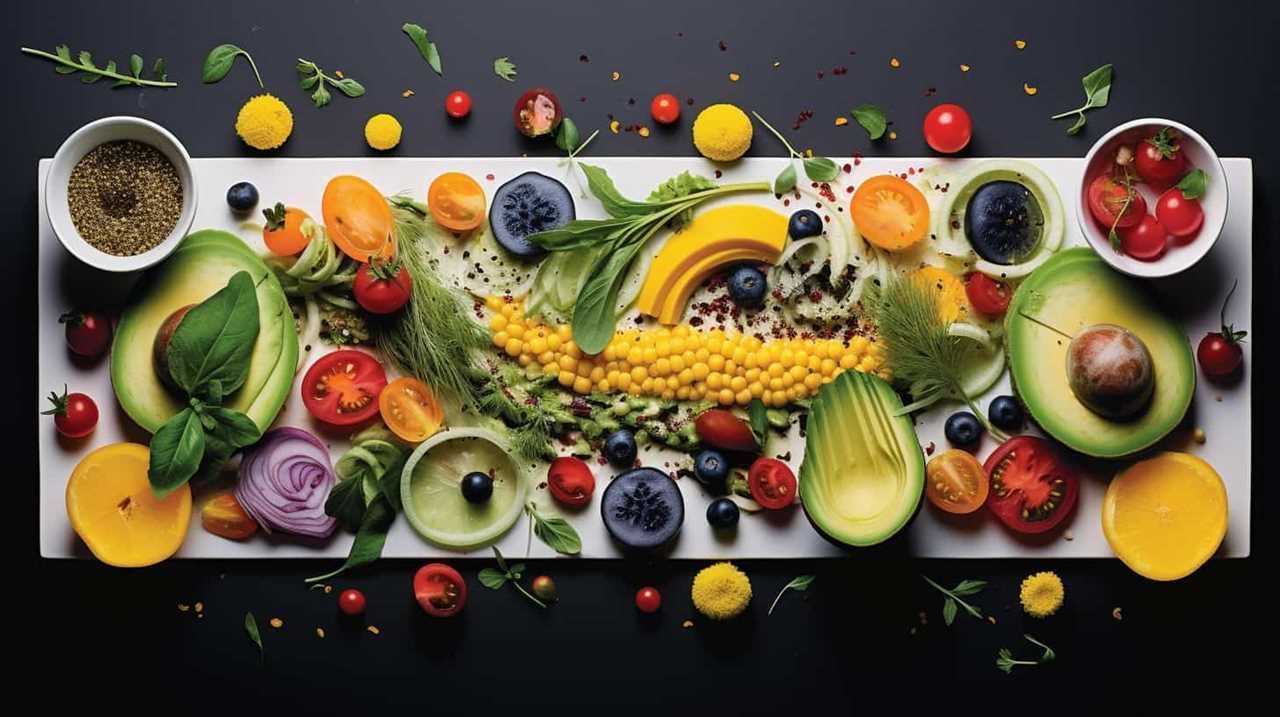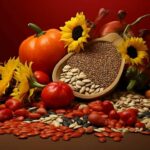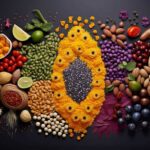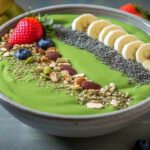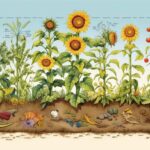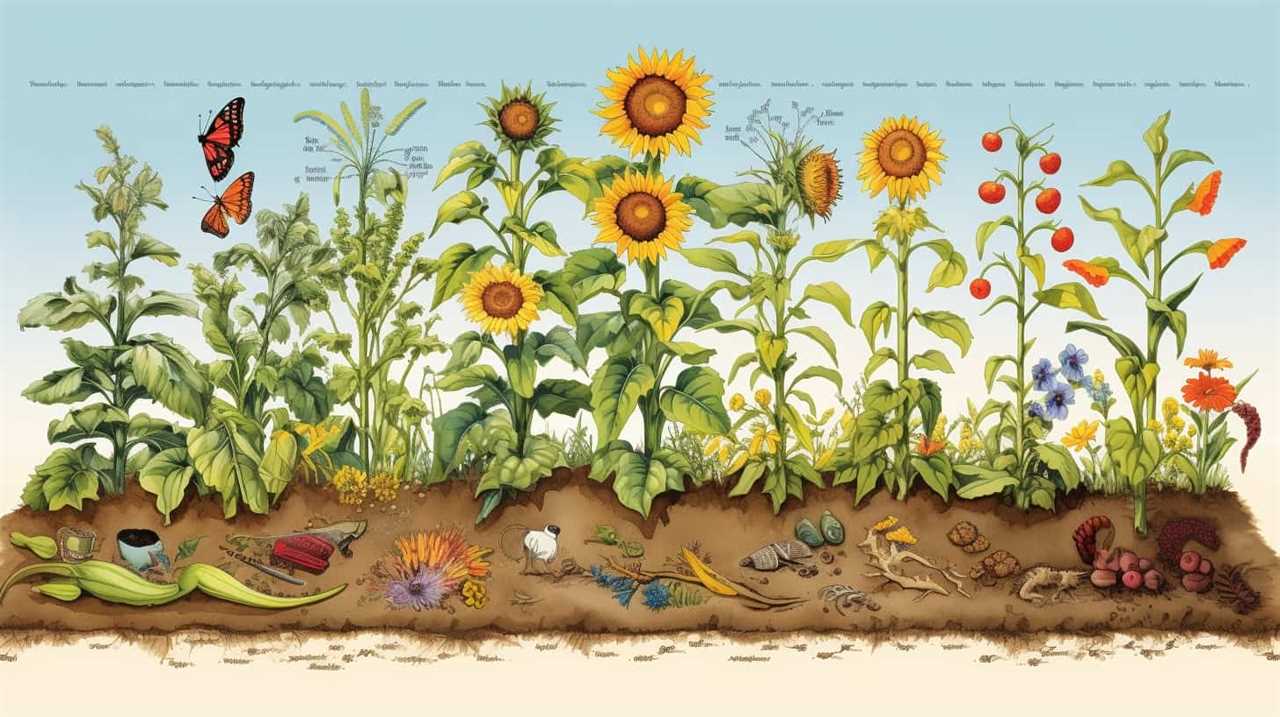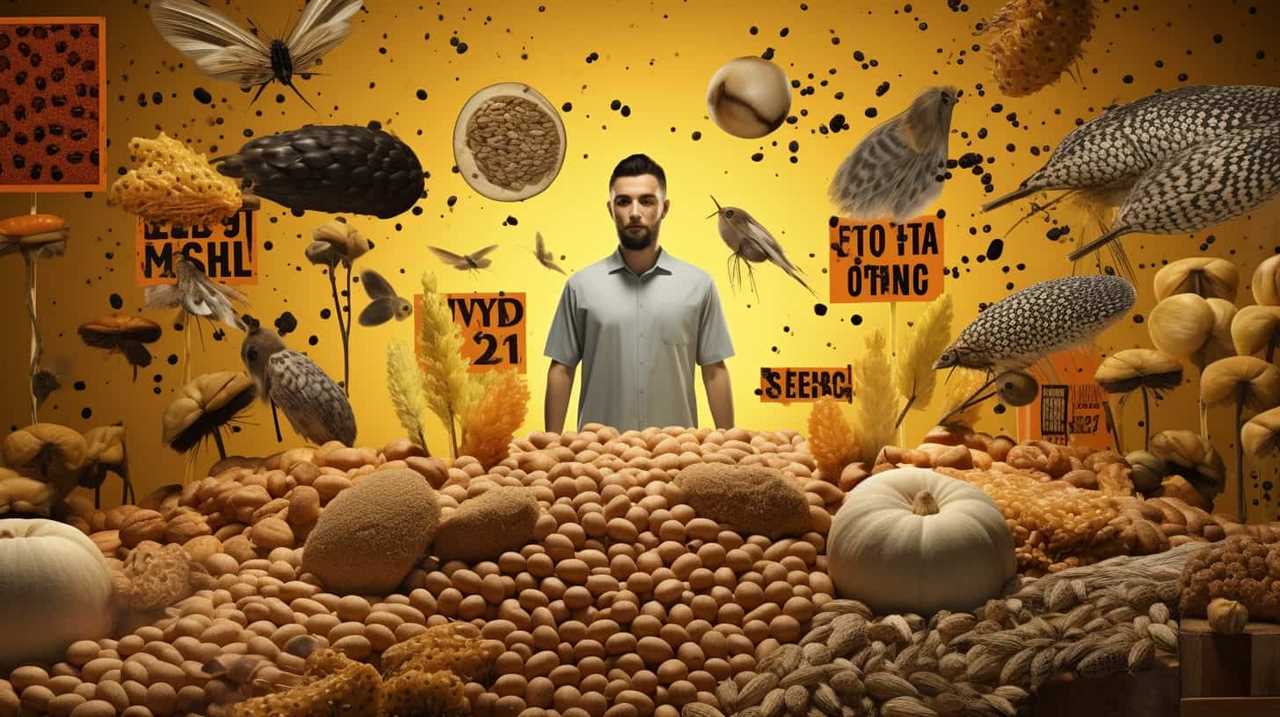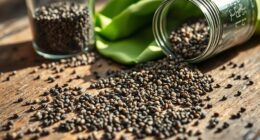Here is our introductory guide on how to achieve high yields when growing chia seeds.
In this article, we will share the techniques and practices that have helped us achieve abundant harvests of this nutrient-rich superfood.
From selecting the right chia seed varieties to optimizing soil and water conditions, we will provide you with the knowledge and tools necessary to cultivate chia seeds successfully.
Get ready to embark on a journey of liberation as we unlock the secrets to maximizing chia seed production.
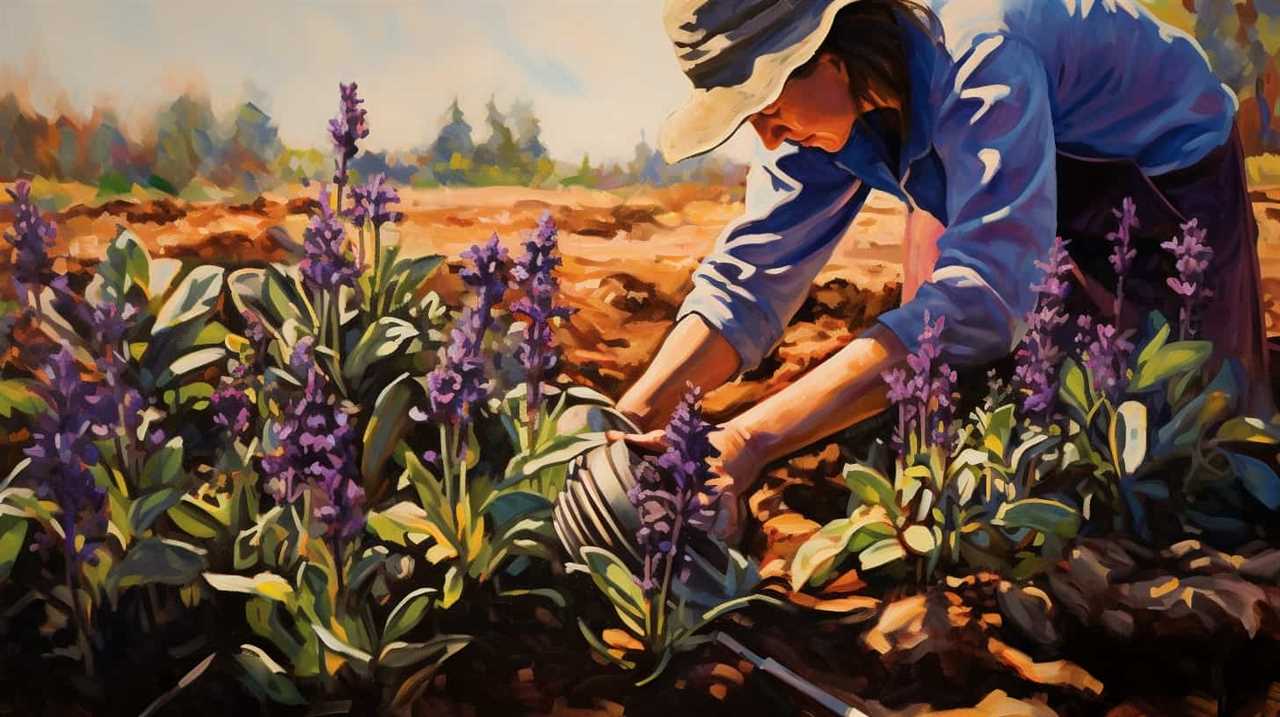
Key Takeaways
- Soak chia seeds in water for about 10 minutes and then drain and rinse them
- Spread the soaked chia seeds evenly on a tray or baking sheet to air dry for 24-48 hours
- Store dried chia seeds in airtight containers in a cool and dry place, ensuring the containers are tightly sealed
- Use stored chia seeds within a year for best quality, labeling the containers with the date of storage
Choosing the Right Chia Seed Varieties
When selecting chia seed varieties, we should consider factors such as yield potential, adaptability to different climates, and nutritional profile.
Choosing organic chia seeds is crucial for those seeking liberation from harmful chemicals and pesticides. Organic chia seeds are grown without synthetic fertilizers or pesticides, ensuring a pure and natural product.
Additionally, understanding chia seed germination is essential for successful cultivation. Chia seeds have a unique germination pattern where they form a gel-like coating when exposed to water. This gel coating helps to retain moisture and promotes a higher germination rate. It’s important to provide the right conditions for germination, such as adequate moisture, temperature, and light.
Best Practices for Chia Seed Planting
To achieve optimal chia seed production, we implement best practices for planting that build upon the previous subtopic’s discussion of choosing the right chia seed varieties.
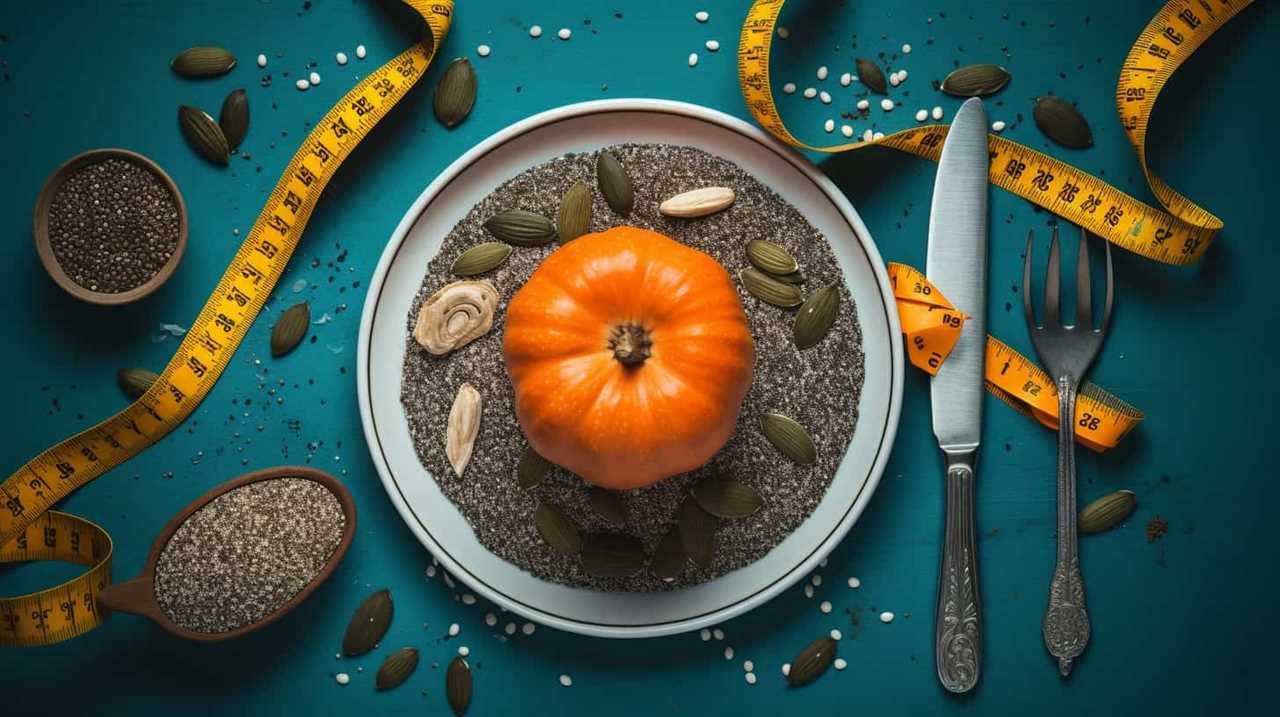
Proper planting techniques are crucial for successful germination and growth of chia seeds. Here are some best practices for chia seed planting:
- Prepare the soil by removing weeds and debris, ensuring a clean and fertile environment.
- Sow the chia seeds evenly, at a depth of about 1/4 inch, ensuring good seed-to-soil contact.
- Water the seeds gently but thoroughly, keeping the soil consistently moist during germination.
- Provide adequate sunlight, as chia seeds require full sun for optimal growth.
- Monitor the plants closely for any signs of pests or diseases, and take appropriate measures to control them.
Following these best practices will help ensure the successful germination and growth of chia seeds, leading to a high yield of nutritious chia seeds that are packed with essential nutrients and health benefits.
Optimizing Soil and Water Conditions
To optimize soil and water conditions for high yield chia seed production, we focus on maintaining proper nutrient levels and moisture levels in the soil.
One important practice in achieving this is crop rotation. Crop rotation is crucial in chia seed production as it helps prevent the buildup of pests and diseases specific to chia plants. By rotating chia with other crops, we can break the pest and disease cycle, improving overall plant health and yield.
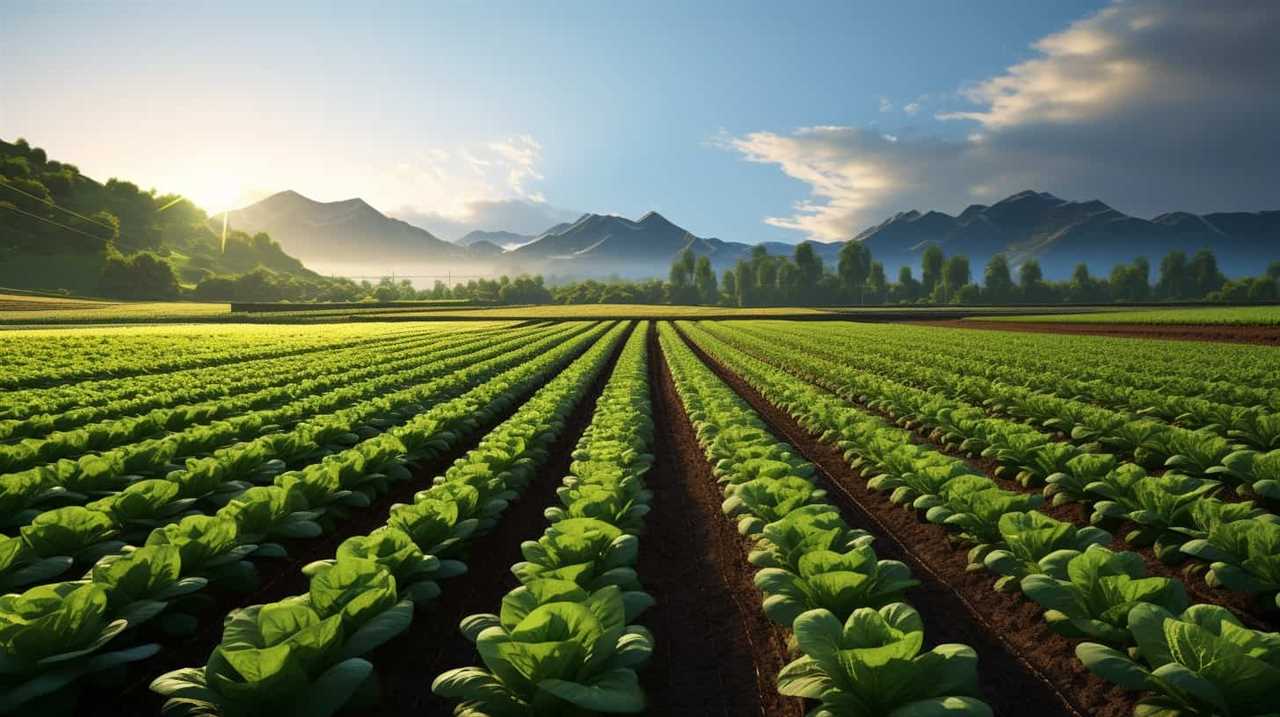
Additionally, organic fertilizers play a significant role in enhancing chia seed yield. These fertilizers, derived from natural sources, provide essential nutrients to the soil, promoting healthy plant growth. They also improve soil structure, water-holding capacity, and nutrient availability, leading to increased chia seed production.
Incorporating both crop rotation and organic fertilizers is essential in optimizing soil and water conditions for successful chia seed production.
Implementing Effective Pest and Disease Management
To effectively manage pests and diseases in high yield chia seed production, we implement proactive strategies that prioritize early detection and prevention. By using eco-friendly pest control methods and closely monitoring the chia plants, we can minimize the risk of infestations and diseases. Here are five key practices we employ:
- Regular scouting: We conduct frequent field inspections to identify any signs of pests or diseases, such as unusual leaf damage or discoloration.
- Crop rotation: We rotate chia crops with other plant species to disrupt pest life cycles and reduce the buildup of diseases in the soil.
- Beneficial insects: We encourage the presence of beneficial insects, such as ladybugs and lacewings, which naturally prey on pests that can harm chia plants.
- Cultural practices: We maintain good plant hygiene by removing any diseased plants immediately, practicing proper irrigation, and providing optimal soil conditions.
- Organic sprays: When necessary, we use organic sprays made from natural ingredients to target specific pests or diseases, minimizing harm to beneficial organisms and the environment.
Harvesting and Storing Chia Seeds
After the chia plants have reached full maturity, we begin the process of harvesting and storing the chia seeds. Harvesting chia seeds involves cutting the plants at their base and gathering the seed heads. These seed heads are then dried thoroughly to remove any moisture.
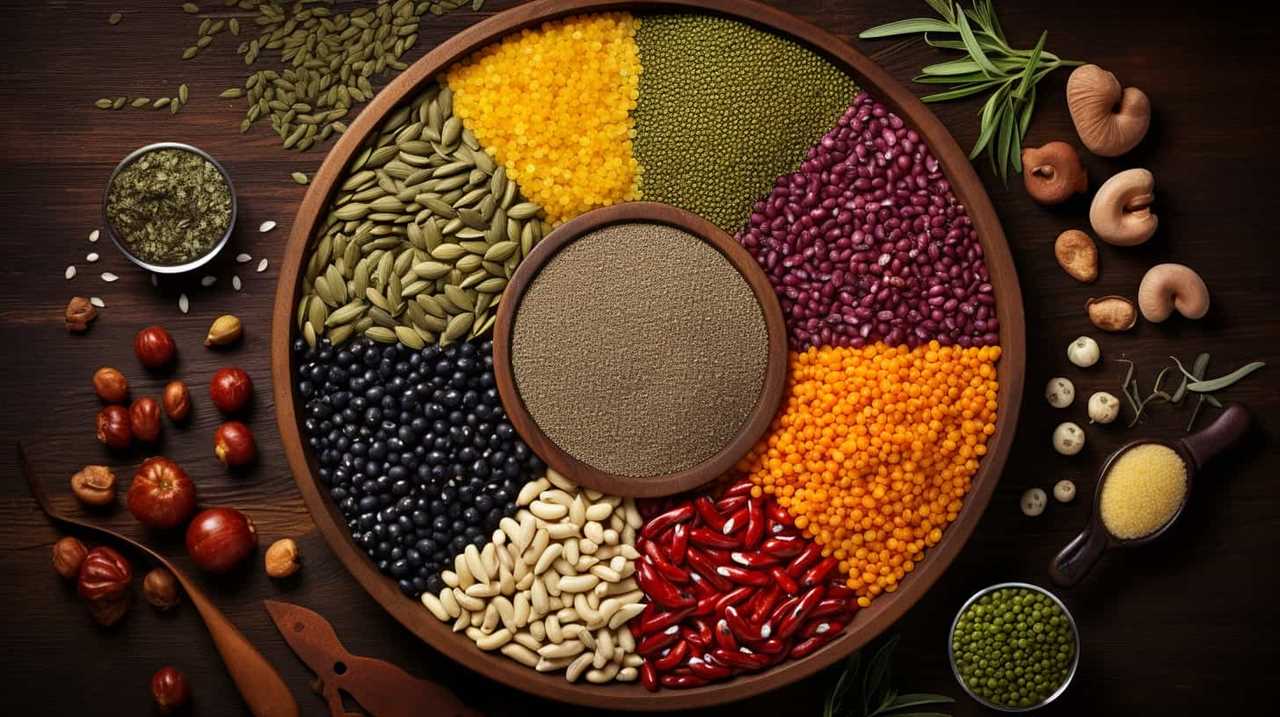
Drying can be done by spreading the seed heads in a single layer on a clean, dry surface, preferably in a well-ventilated area. It’s important to ensure that the chia seeds are completely dry before processing them further. Once dried, the seed heads can be gently crushed or rubbed to release the seeds. The seeds can then be sifted to remove any remaining plant material.
Properly dried and processed chia seeds can be stored in airtight containers in a cool, dry place for up to a year. The benefits of using chia seeds in recipes include their high nutritional value, such as being rich in omega-3 fatty acids, fiber, and antioxidants, as well as their ability to add texture and thickness to dishes.
Conclusion
In conclusion, by carefully selecting the right chia seed varieties and implementing best practices for planting, optimizing soil and water conditions, and effectively managing pests and diseases, farmers can achieve high yields of chia seeds.
With proper harvesting and storing techniques, they can ensure the quality and longevity of their crop.
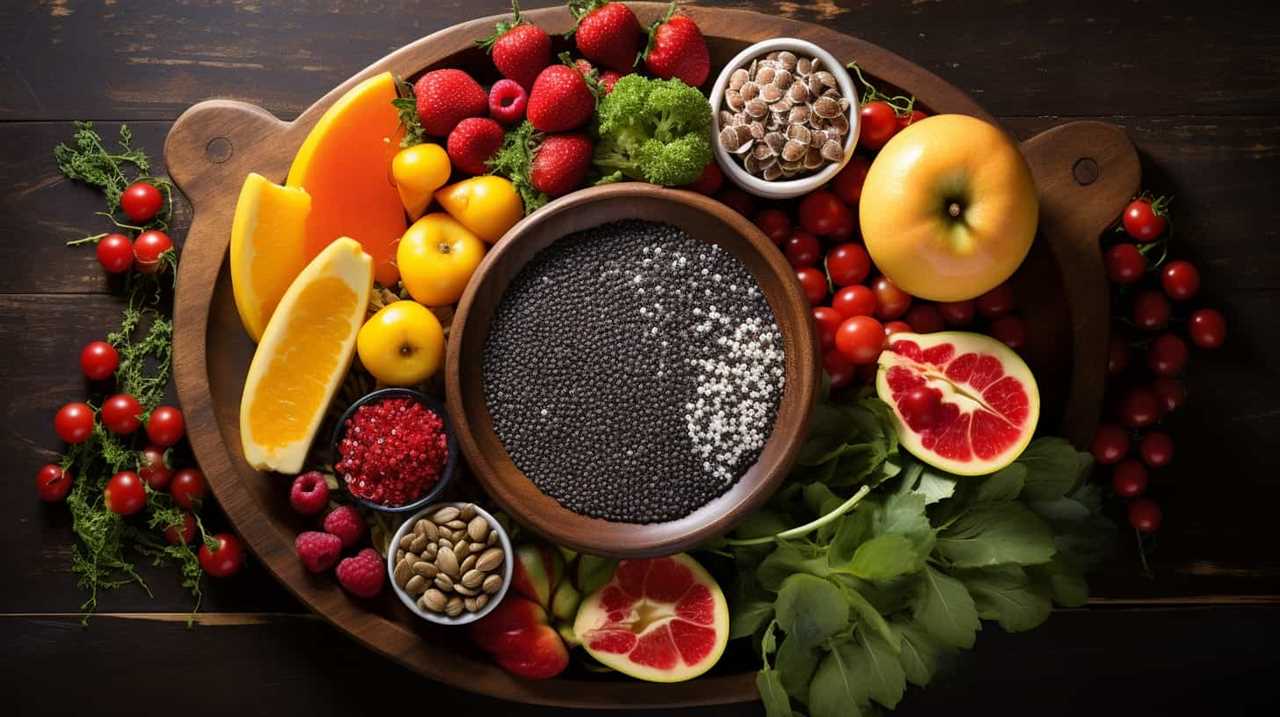
Through the precise application of these methods, farmers can maximize their chia seed production, providing a reliable source of this nutritious superfood for consumers.
